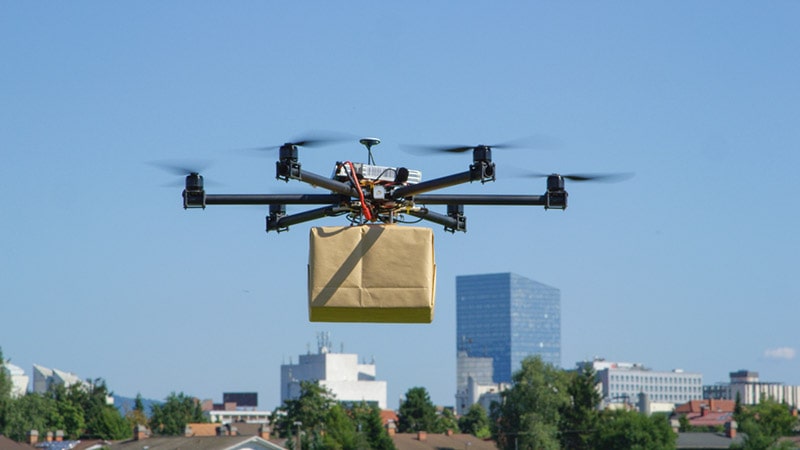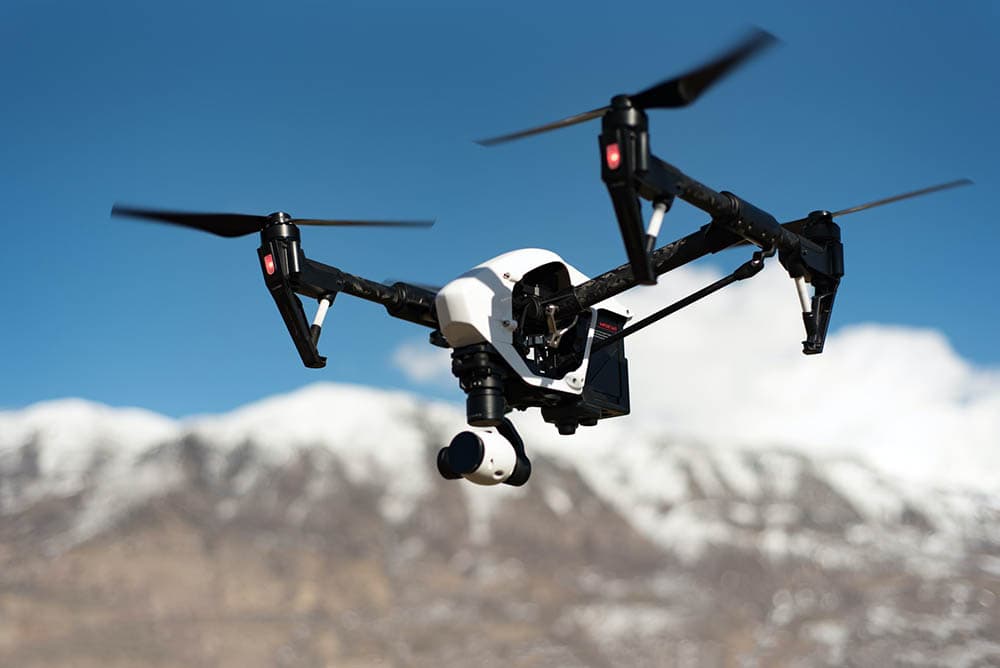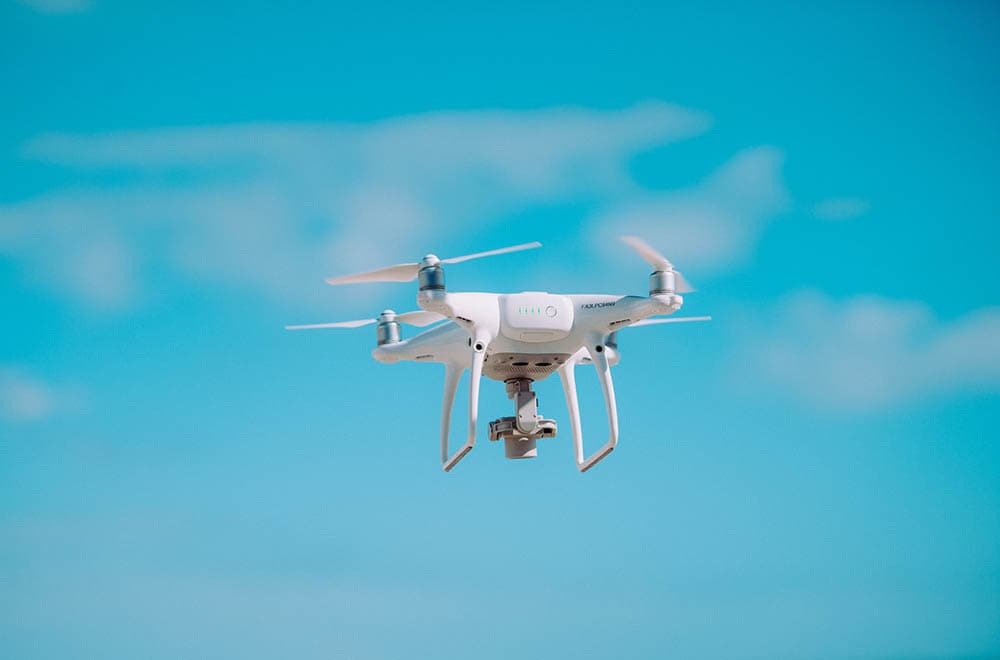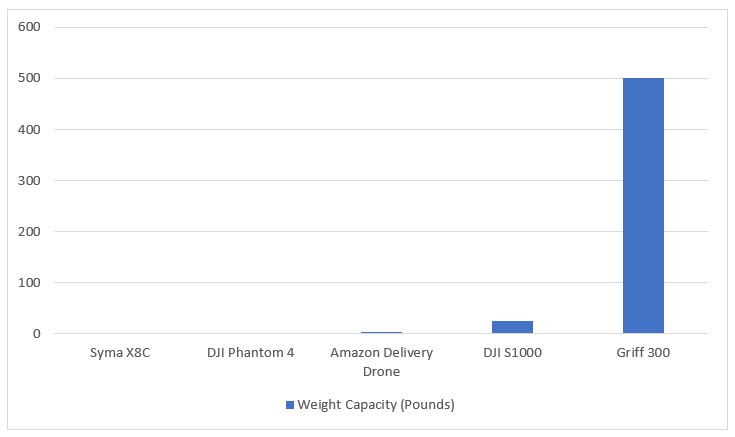How Much Weight Can a Drone Carry? The Fascinating Answer
Last Updated on

Drones are becoming increasingly prevalent, and they can range from toys that cost little more than a few bucks to those used professionally as delivery drones or by the military. Some drones, including trick drones designed for use in the home and typically incapable of flying outdoors, may not be able to carry anything more than their own weight, but there are some drones designed specifically for the purpose of lighting heavy weights that can carry hundreds of pounds.
Carrying capacity is typically related to the price of drones and gets higher with more expensive drones. There are other factors to consider, too, including how long the drone can fly when carrying its maximum capacity.
Considering how many new ideas are created involving drones, such as food delivery, carrying capacity is becoming more important. As such, you can expect new drones capable of carrying more weight to be made available in the future.

About Drones
A drone is an Unmanned Aerial Vehicle. It is typically controlled by the user in real time, although there are automated drones too. At their most basic, drones are used for fun and leisure activities and basic indoor models can be bought for relatively little money.
At the other end of the drone scale are those designed for military purposes. These are rugged machines that can fly for several hours and potentially carry a variety of items.
Some of the most popular drones in recent years are camera drones. These have built-in cameras, can be flown outdoors, and they have a decent range so that the operator can get long-range images.

Drone Delivery Services
Another use of drones that has been mooted in recent years is that of drone delivery services. Companies like Amazon have investigated and invested in technology that would enable them to carry and deliver packages to customers, negating the need to use delivery drivers or vans.
This use is of particular interest when considering the weight capacity of drones because while camera drones already have the payload attached, delivery drones would need to be able to carry different items and be able to make successful flights to and from delivery addresses.
How Much Weight Can a Drone Carry?
The amount of weight a drone can carry depends primarily on the model of the drone. The most basic drones cannot carry anything other than themselves and adding extra weight would prevent them from taking off or greatly reduce the distance and speed at which they travel.
Some common models of drones can carry around 4 pounds, and there are professional drones designed specifically for lifting and moving heavy weights that can carry nearly 500 pounds. There may be some drones available that can carry more than this but they have not been announced to the public.


Popular Drone Models Compared
| Model | Weight Capacity (Pounds) |
| Syma X8C | 0.18 |
| DJI Phantom 4 | 1 |
| Amazon Delivery Drone | 4.5 |
| DJI S1000 | 25 |
| Griff 300 | 500 |


Final Thoughts
Drones can be used for a variety of purposes, with the most common purpose being to photograph or video footage or to relay visual data to the controller. Some companies have suggested the use of the technology for delivery services, although it has yet to really come to fruition.
Typical consumer drones have a capacity of around 5 pounds, but there are some models that can carry as much as 500 pounds, and there are likely to be drones launched in the near future with even greater capacity than this.
Featured Image Credit: Flystock, Shutterstock
About the Author Robert Sparks
Robert’s obsession with all things optical started early in life, when his optician father would bring home prototypes for Robert to play with. Nowadays, Robert is dedicated to helping others find the right optics for their needs. His hobbies include astronomy, astrophysics, and model building. Originally from Newark, NJ, he resides in Santa Fe, New Mexico, where the nighttime skies are filled with glittering stars.
Related Articles:
Can You Use Binoculars to Look At Stars? How to Choose the Right Pair
How to Clean a Refractor Telescope: Step-by-Step Guide
How to Clean a Telescope Eyepiece: Step-by-Step Guide
How to Clean a Rifle Scope: 8 Expert Tips
Monocular vs Telescope: Differences Explained (With Pictures)
What Is a Monocular Used For? 8 Common Functions
How to Clean a Telescope Mirror: 8 Expert Tips
Brightfield vs Phase Contrast Microscopy: The Differences Explained
